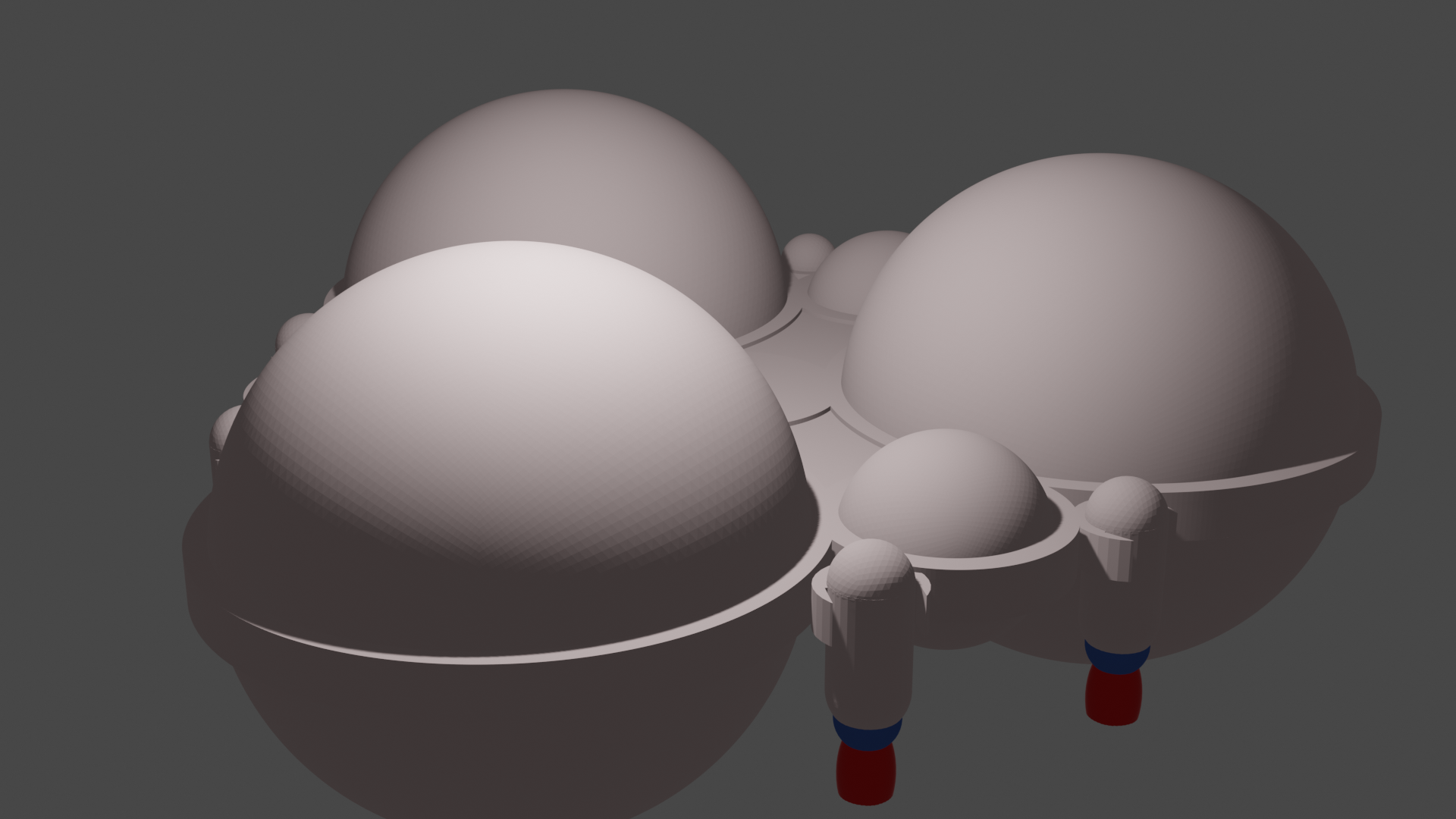I had gotten started on an elevator system for the Iliad-06. Moving people in an elevator is pretty straightforward. Even on a ship with a 520 meter tall living area, conventional elevators work just fine. You need two sets because most cable based systems are limit to 825 feet. The weight of the cable becomes too unwieldy past that.
But I also thought of all of the crops to be grown, delivery trucks, moving vans, and the like. If I limited the size of the vehicles, and their loads, they can fit nicely in hallway system I've already devised. And they can be carried between floors by a scaled up version of the same elevators carrying people. Though I may have to break those up to shorter segments.
But then the question arose... trucks in the hallway? And what do we do if the cargo elevator breaks down?
I looked at a lot of ways to solve these problems. I'm resigned to the fact that the ship will have a fleet of electric carts. Some adapted for cargo. Some adapted for passengers. In agriculture areas and fabrication plants, it is fine to have carts running around on the same streets as people. There really shouldn't be a lot of foot traffic in those areas, and what foot traffic there is will be trained to look out.
For residential and commercial areas though, we have a need for point to point transportation. But we also have people who are also using the hallways.
I'll save you all of the solutions I came up with... but the short answer is I took page from the design of Disney World. I created an extra floor for all of that traffic, with staircases and lifts to move people and things from the transportation floor to the inhabited floors. These extra transportation decks also make a handy place to stuff pipes, vehicle repair bays, and parking spaces.
For residential areas, 2 housing levels share one transport deck. One sits atop, and one below. With 4 housing levels per sphere, that's 2 transportation decks.
The six decks of the Commercial zone, and all of the Industrial areas share one additional transportation deck. This transportation deck is on the equator of the sphere, and will be how people and materials can travel between sections of the ship.
Here is my new floor plan:
Also, I have tweaked the design of the Iliad-06. I ditched the Bussard scoop and moved the support craft to the main ring. The concept is that crew are going to have to get in and out of those things regularly during the voyage to maintenance the engines. After the ship arrives at it's destination, those support craft are going to be returning with raw material that is going to need to get into the fabrication areas for processing.

I'm also convinced that these carts will work better than an elevator system, at least for cargo. The concept is that there are massive ramps built at key areas of the vessel, and those permit the carts to transition levels. The process would probably be too slow for passenger traffic.
The concept is that a cart gets in on either the "up" or "down" side of the spiral, and keeps following that spiral around until it arrives on its intended floor. Floors that don't permit vehicle traffic will simply not have entrances and exits. I've calculated that the ramps have an 18% grade. Which should be ok for vehicles with rubber tires and a big enough engine.
I'd given thought to just about every mode of transport. I considered old-fashioned Straßenbahn, Rack Railways, and even Thyssen Krupp's Wonkavator. The problem with all of these systems is switching. 100 years of operation, and completely out of contact with the original manufacturer, even with the capability to manufacture parts, these systems gradually become a hazard to run. Only a select few ever have to learn to fix these things, and those people are the most likely to get cut in half during an accident fixing these things.
My friends who ride the DC Metro completely understand how one bad switch can disrupt an entire network.
As far as keeping electric cars running, it may actually be cost effective to use batteries. Electric trains and streetcars require hundreds or thousands of volts piped across bare wires. Subways use a third rail. And under normal working conditions, they'd probably work just fine. But with a metal structure of the ship, the first time a cable snaps and electrifies a chunk of deck, people are going to die. And they might not even be in the same compartment, or even on the same floor as the incident.
Your next question will be "well if they are using battery powered cars, where are they getting the lithium for the batteries?" They have 32 million of metric tons of Lithium Carbonate stored as fuel for the reactors and engines. The process of recovering lithium from batteries is well understood.
And if you are curious, the reason this comes up is because the opening scene is the player's character moving into a new apartment. And for that I had to figure out how he or she got his or her stuff there.
Oh, and if you have been following my spreadsheets, I've shifted from "Nimitz Carriers" as my "obscenely large vehicle" metric. I have shifted to a "Musashi Class Battleship". The idea being the Imperial Japanese Navy still goes off and builds insanely large (72000 tonne) battleships during a post War arms race. Only this time nuclear powered. Just for whatever reason the Musashi name won out over the Yamato when it came down to the first ship built.
Ok, and with that set of distractions out of the way, back to writing...